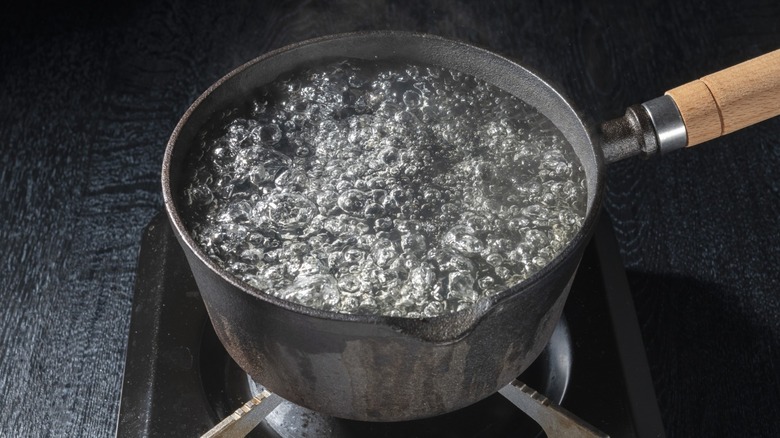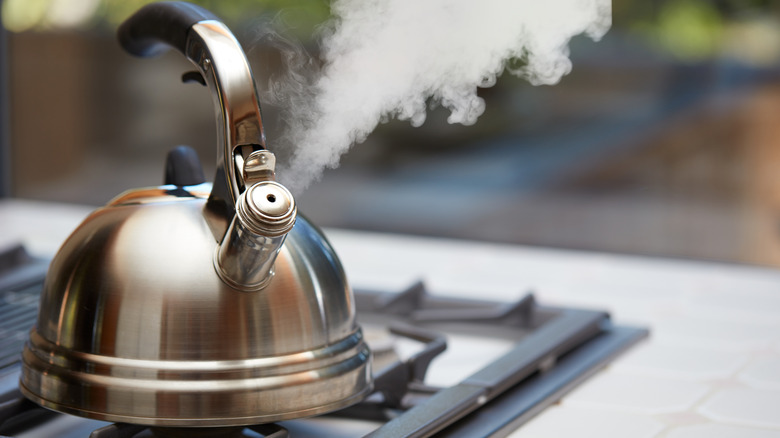Why Water Boils Faster In Certain Parts Of The World
When you think of the number "212," one of three things likely comes up: the Manhattan area code, that Azealia Banks song, or the boiling point of water. Even if we don't necessarily have the number in mind when we're about to make pasta or hard-boiled eggs — usually we just put a pot of water on the burner and crank that baby up to high — it's one of those facts from school we keep stashed away, like how we all know the mitochondria is the powerhouse of the cell.
But there are some places where the boiling point of water is not 212 degrees Fahrenheit (or 100 degrees Celsius, if you live outside of the United States). See, it's more accurate to say that water boils at 212 degrees Fahrenheit at sea level. Water (or other liquids that are primarily water, such as milk or fruit juice) boils when the outward pressure of the vapor is greater than the external pressure from the atmosphere. Basically, gravity is pushing down on the surface of the liquid, but as heat converts that liquid into gas, there comes a point when there is not enough force to stop all that water vapor from dispersing into the atmosphere — that's when water boils.
However, as elevation increases, the atmosphere exerts less pressure — this means water requires less energy (in the form of heat) to be converted into a gas because the vapor can escape more easily. As such, it boils at a lower temperature than it would at sea level.
Water boils at lower temperatures up high
If you find yourself in Denver, Colorado (5,280 feet above sea level), home of the newly-renovated Casa Bonita, you'll see that water boils at around 203 degrees Fahrenheit. In Mexico City (7,349 feet above sea level), it will boil at about 198 degrees Fahrenheit. If you want to get even more extreme, you could venture up to the highest continuously inhabited settlement on Earth: La Rinconada, a Peruvian village peering down from the Andes at 16,700 feet above sea level. There, water will only boil at around 181 degrees Fahrenheit. If you're really in a hurry, water will boil at roughly 162 degrees Fahrenheit atop Mount Everest.
Unfortunately, this can make your life a lot harder if you want to cook. Those wonderful recipes you've committed to memory were more than likely created by chefs who lived comfortably at sea level, and plenty of complications can arise if you're up too high. Eggs will take longer to boil, pasta won't soften up the way you want it to, and certain techniques — like egg poaching and vegetable parboiling — become more challenging if you haven't yet developed a high-altitude cooking instinct. For example, generally accepted guidance for how long to boil broccoli for an al dente bite won't apply at elevation.
Instead, you will have to increase cooking times to compensate for the lower temperatures. If you're planning to move to the Rockies or the Alps anytime soon, it might be a good idea to turn to Instant Pot recipes to simplify weeknight cooking, as they will make dishes like stews, beans, rice, and lentils come out much faster.

